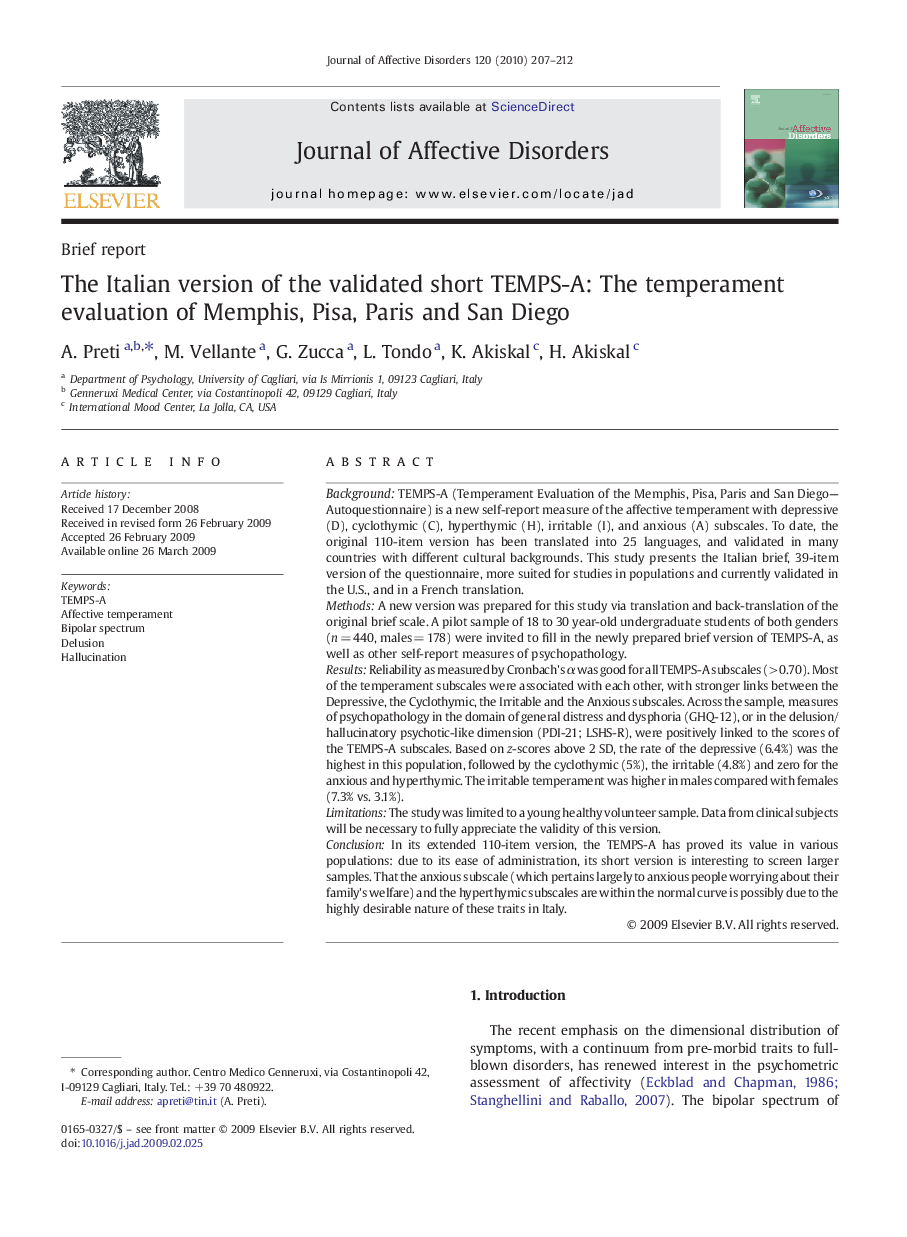| Article ID | Journal | Published Year | Pages | File Type |
|---|---|---|---|---|
| 4186716 | Journal of Affective Disorders | 2010 | 6 Pages |
BackgroundTEMPS-A (Temperament Evaluation of the Memphis, Pisa, Paris and San Diego—Autoquestionnaire) is a new self-report measure of the affective temperament with depressive (D), cyclothymic (C), hyperthymic (H), irritable (I), and anxious (A) subscales. To date, the original 110-item version has been translated into 25 languages, and validated in many countries with different cultural backgrounds. This study presents the Italian brief, 39-item version of the questionnaire, more suited for studies in populations and currently validated in the U.S., and in a French translation.MethodsA new version was prepared for this study via translation and back-translation of the original brief scale. A pilot sample of 18 to 30 year-old undergraduate students of both genders (n = 440, males = 178) were invited to fill in the newly prepared brief version of TEMPS-A, as well as other self-report measures of psychopathology.ResultsReliability as measured by Cronbach's α was good for all TEMPS-A subscales (> 0.70). Most of the temperament subscales were associated with each other, with stronger links between the Depressive, the Cyclothymic, the Irritable and the Anxious subscales. Across the sample, measures of psychopathology in the domain of general distress and dysphoria (GHQ-12), or in the delusion/hallucinatory psychotic-like dimension (PDI-21; LSHS-R), were positively linked to the scores of the TEMPS-A subscales. Based on z-scores above 2 SD, the rate of the depressive (6.4%) was the highest in this population, followed by the cyclothymic (5%), the irritable (4.8%) and zero for the anxious and hyperthymic. The irritable temperament was higher in males compared with females (7.3% vs. 3.1%).LimitationsThe study was limited to a young healthy volunteer sample. Data from clinical subjects will be necessary to fully appreciate the validity of this version.ConclusionIn its extended 110-item version, the TEMPS-A has proved its value in various populations: due to its ease of administration, its short version is interesting to screen larger samples. That the anxious subscale (which pertains largely to anxious people worrying about their family's welfare) and the hyperthymic subscales are within the normal curve is possibly due to the highly desirable nature of these traits in Italy.
